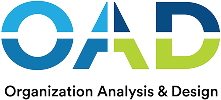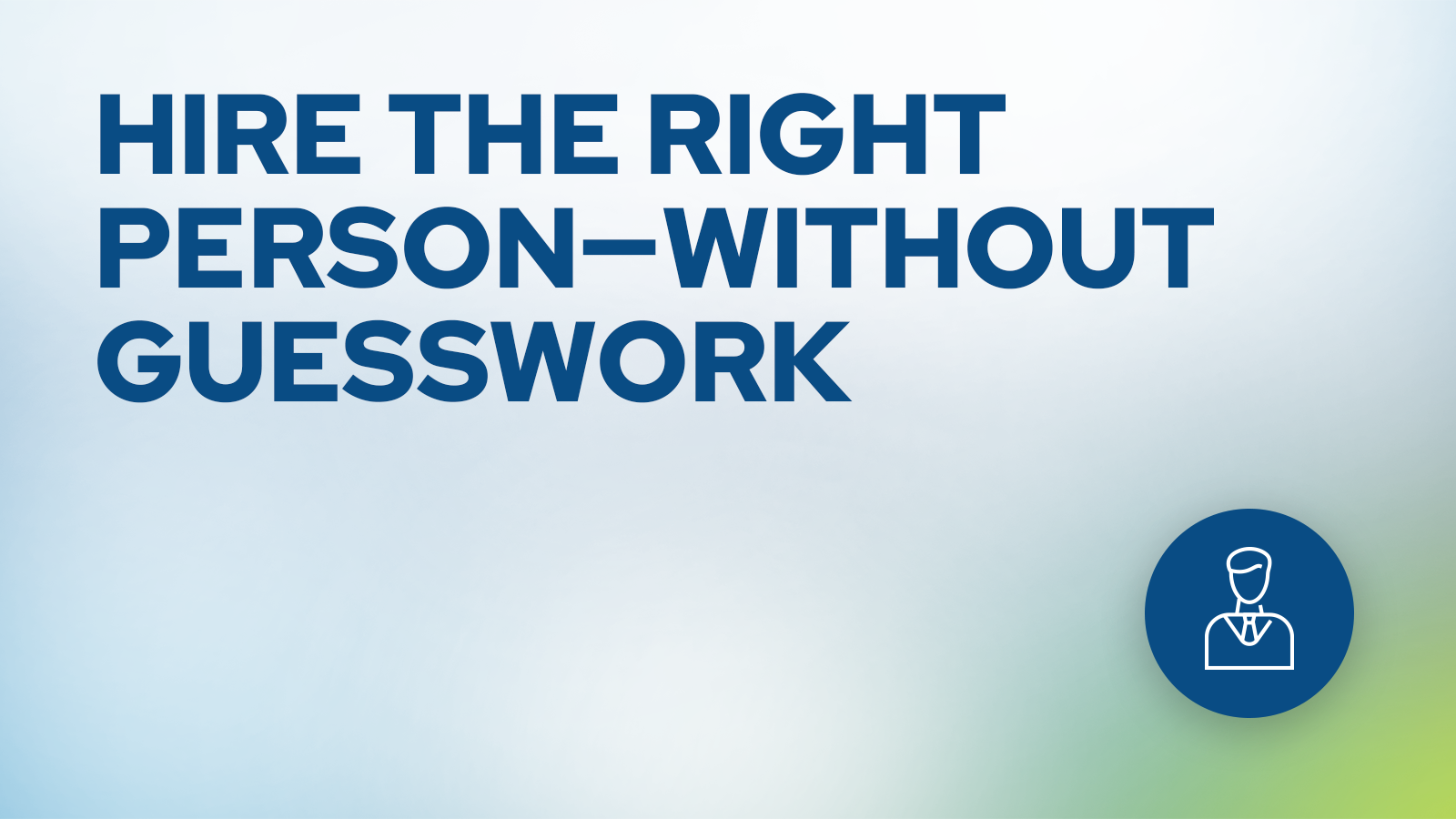Hiring the wrong person doesn’t just waste time — it drains productivity, morale, and revenue. If your hiring process still relies on resumes and gut instinct, you’re leaving too much to chance. This guide shows you how to build a smarter system that consistently brings in the right people.
Table of Contents
- How to Hire the Right Person: Step 1 – Clarify What the “Right Fit” Really Means
- Step 2 – Build a Strategic Recruitment Process
- Step 3 – Use Behavioral Assessment Tools to Go Deeper
- Step 4 – Create a 3-Stage Interview Process That Works
- Step 5 – Engage New Hires Before Their First Day
- Step 6 – Design a 90-Day Success Plan
- Avoiding Common Hiring Mistakes
- What Great Companies Do Differently
- Final Thoughts: Hire Smarter, Grow Faster
- Test OAD for Free
How to Hire the Right Person: Step 1 – Clarify What the “Right Fit” Really Means
Before you post a job description or screen resumes, you need crystal clarity on what you’re actually looking for. Not just in terms of skills, but in mindset, behavior, and long-term alignment with your company’s mission.
Understanding your company culture is essential for defining the right fit, as it helps ensure candidates will thrive in your unique work environment and share your core values.
Start by asking: What does success look like in this role six months from now? Then reverse-engineer the traits and behaviors needed to get there. Maybe it’s resilience, initiative, or the ability to collaborate across departments. Whatever the answer, write it down. These are your non-negotiables. It’s also crucial to identify the specific skills required for the role, including both technical abilities and character traits, to ensure you select the best candidate.
Don’t fall into the trap of hiring only for experience. Jeff Bezos once said he looks for people who are “right a lot.” That means hiring for judgment, not just background. A strong candidate might not come from the same industry—but if they share your values and can grow with your business, they may be your best long-term asset. Always ensure candidates possess the right skills needed for the particular position, not just a relevant work history.
Involve your team in this step. Ask current employees what qualities they believe are essential for success in the role. You’ll often uncover blind spots that don’t show up on job postings.
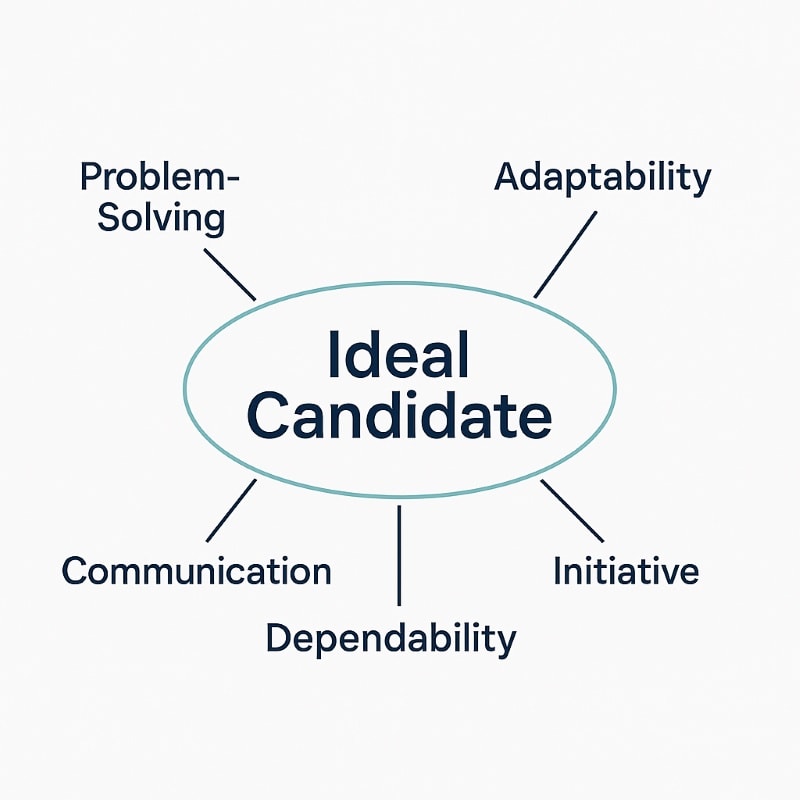
When you define what the “right fit” actually looks like, you stop hiring to fill seats—and start hiring to build a future.
Step 2 – Build a Strategic Recruitment Process
Hiring top talent requires more than a job post and a few interviews. If you want to attract the right people, you need to treat recruitment like a funnel, not a checklist. This process requires significant effort to identify the key competencies and tailor each stage to the particular role you are hiring for.
Start by crafting job ads that speak to the role’s purpose, not just its tasks. What will this person contribute to the team? What kind of culture will they join? Top candidates aren’t just looking for work — they’re looking for meaning. Make sure your job ads are designed to attract candidates who are genuinely interested in the position and your company’s mission. A vague or cookie-cutter job description won’t attract the right candidate; it’ll attract the most available one.
Be upfront about your values and expectations. Let candidates self-select out if they’re not a match. That’s a good thing. It saves time and ensures that those who do apply are more aligned from the start. Employers have a responsibility to set clear expectations and communicate them effectively throughout the hiring process.
It’s also critical to resist urgency-driven decisions. A rushed hire often leads to long-term problems, including poor performance, low engagement, or early turnover. The best companies hire slow, with clear systems that prioritize consistency and alignment over speed.
Think of your recruitment process as the foundation for long-term performance. It’s not just about filling an open position — it’s about building a team that scales with your business.
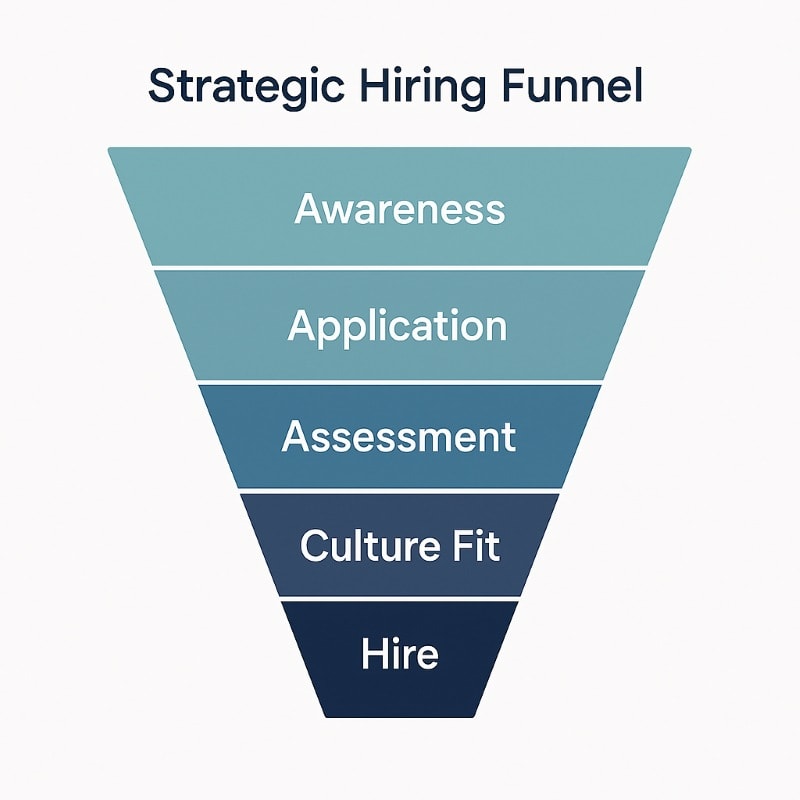
Step 3 – Use Behavioral Assessment Tools to Go Deeper
Resumes tell you where a candidate has been — not how they’ll perform in your environment. That’s why smart companies now go beyond the resume and integrate behavioral assessments into their hiring process.
A good behavioral tool helps you evaluate how someone thinks, communicates, solves problems, and adapts under pressure. These are the traits that drive performance — and they’re nearly impossible to gauge through traditional interviews alone. Behavioral tools also help determine which candidates are best suited for the role by providing objective insights into their fit for your specific needs.
That’s where a solution like OAD comes in. OAD’s scientifically validated personality assessment goes beyond surface-level traits and uncovers a candidate’s natural strengths, preferred work style, and cultural alignment. It equips hiring managers with actionable data to make more informed, confident decisions — before the first interview even happens. This data helps hiring managers decide who to move forward with, ensuring the selection process is both efficient and effective.
For example, if your team thrives on fast-paced collaboration, OAD can help identify candidates who naturally excel in dynamic, team-driven environments. Conversely, if the role requires independent problem-solving and deep focus, the tool can flag mismatches early — saving you from costly mis-hires down the line.
As Warren Buffett famously said, he looks for people with “integrity, intelligence, and energy — and without the first, the other two will kill you.” Behavioral tools give you a way to assess those intangibles systematically, not subjectively. It’s also crucial to assess a candidate’s knowledge about the role, company, or industry as part of the evaluation process to ensure a well-rounded hiring decision.
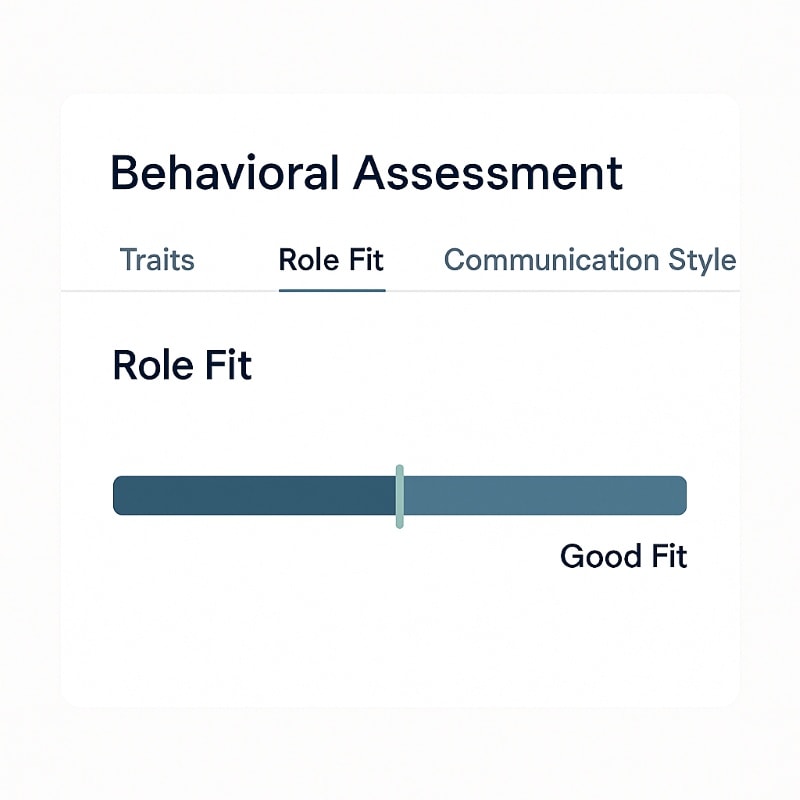
Stop guessing who a person is based on how they present themselves. With behavioral insights, you can make hiring decisions rooted in data — not assumptions.
Step 4 – Create a 3-Stage Interview Process That Works
Most companies rely on one or two interviews to make a major hiring decision. But surface-level conversations rarely reveal how someone will perform on the job. A structured, multi-stage interview process reduces bias and increases the odds of finding a candidate who fits both the role and your culture. Incorporating structured interviewing practices—such as consistent questions and evaluation methods—helps ensure a fair, thorough, and effective hiring process.
Here’s a three-stage framework that works:
Stage 1: Culture & Values Fit
This interview is all about who the candidate is — not what they’ve done. Ask open-ended questions that explore values, decision-making, and alignment with your company mission. You’re not looking for perfect answers — you’re listening for patterns, mindset, and motivation.
Include questions that help you understand how the candidate would adapt to your work environment, considering both its physical and cultural aspects.
“Tell me about a time you had to make a difficult decision without full information. What did you do, and what was the result?”
Look for clues about judgment, adaptability, and communication style.
Stage 2: Technical or Functional Evaluation
Next, move from conversation to demonstration. Assign a real-world task or scenario that mirrors what they’ll actually do in the role. This could be a mock sales call, a coding test, or a project outline — whatever best simulates the job.
This step separates those who talk a good game from those who can execute, helping you identify the right person for the job.
Stage 3: Team Interaction Simulation
Finally, observe how the candidate interacts with your current employees. Invite them to a team brainstorming session, a collaborative task, or a mock meeting. Watch how they engage, listen, contribute, and adapt to the group. Look for candidates who are enthusiastic, bring positive energy, and demonstrate a proactive attitude, as these traits help create a vibrant, collaborative environment.
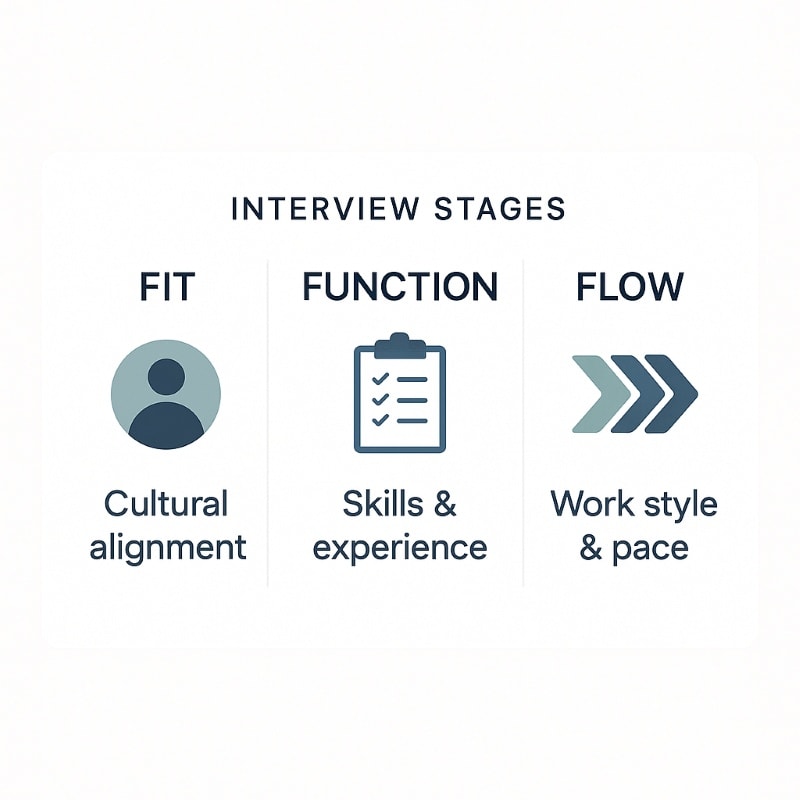
This approach doesn’t just help you evaluate skills — it gives you a glimpse of how they’ll show up every day. And it gives your team a voice in the process, which increases buy-in and reduces friction after the hire.
Step 5 – Engage New Hires Before Their First Day
The hiring process doesn’t end when the offer letter is signed. In fact, what you do between the “yes” and day one can shape how fast — and how well — a new hire integrates into your team.
Preboarding is your secret weapon. Instead of radio silence, send a welcome email, introduce them to their manager or mentor, and invite them into a team chat or Slack channel. Share your company handbook, onboarding schedule, or even a short video from the CEO. These small steps build excitement and belonging before the work even begins, helping new hires feel genuinely excited about joining the team.
Why does this matter? Because new hires who feel connected early are more likely to be productive, engaged, and loyal. According to a Gallup study, only 12% of employees strongly agree their organization does a great job onboarding — which means there’s huge room for improvement.
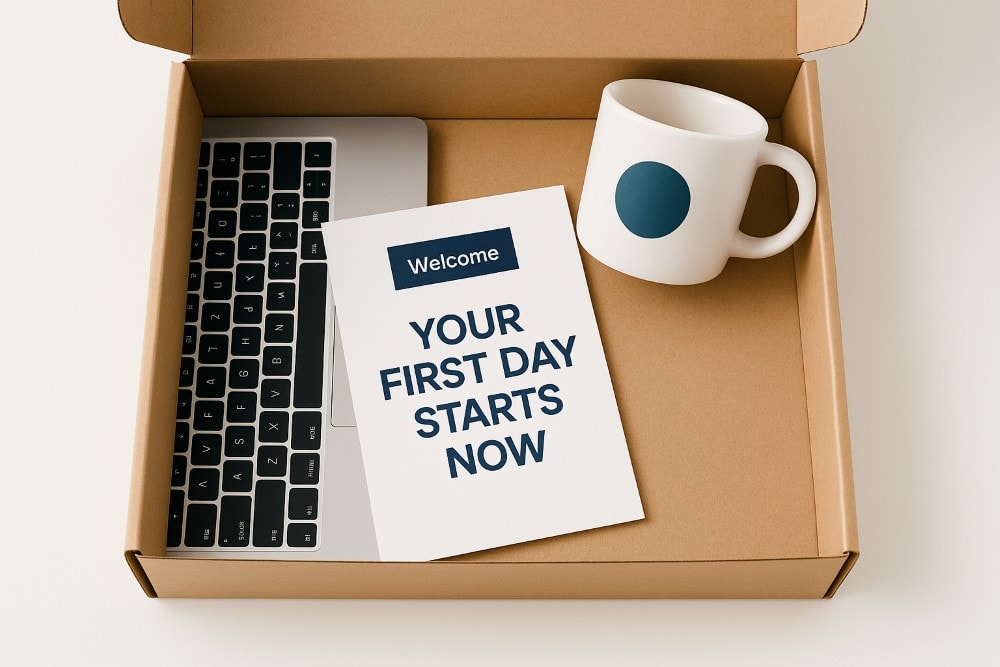
When you engage people early, you reduce first-day anxiety and show them they’re not just filling a role — they’re becoming part of something bigger.
Step 6 – Design a 90-Day Success Plan
A great hire still needs a great runway. Without structure, even top talent can flounder. That’s why a well-thought-out 90-day plan isn’t just helpful — it’s essential.
Start with clear milestones: what should the new hire accomplish by day 30, 60, and 90? Align these goals with the expectations you set during the hiring process. Make room for quick wins, learning time, and real deliverables. Be sure to incorporate training into the 90-day plan to help the new hire develop key skills and integrate into your company culture.
But don’t stop at checklists. Schedule regular check-ins with their manager or mentor to provide feedback, clarify expectations, and celebrate progress. Use these opportunities to train and support the new hire, ensuring they have the guidance and resources needed to succeed. This creates momentum, builds confidence, and surfaces potential roadblocks before they become problems.
It also gives you a structured way to evaluate whether the person is truly the right fit — not just in skills, but in communication, collaboration, and mindset.
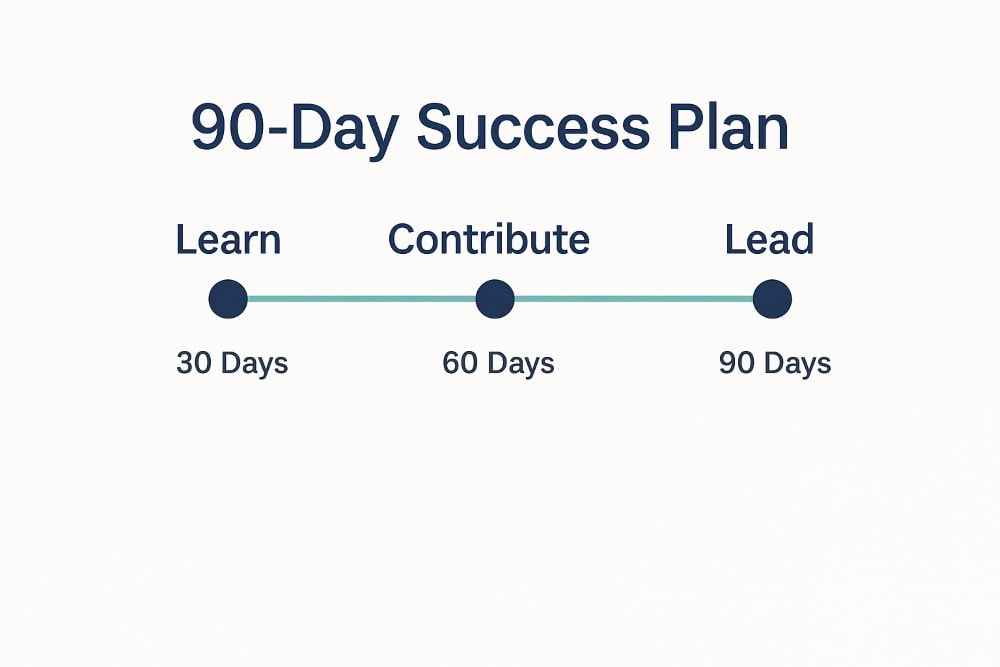
When onboarding is intentional, performance becomes predictable. And that’s how you turn a promising hire into a long-term asset.
Avoiding Common Hiring Mistakes
Even with a solid process, it’s easy to fall back into old habits — especially under pressure. Poor hiring decisions can lead to significant costs for the company, including high turnover, delays in achieving goals, and decreased productivity. Here are some of the most costly hiring mistakes even experienced teams make:
One common mistake is making urgency-driven decisions. When you’re in a rush to fill a role, you risk hiring the wrong one, which can have a major financial impact due to increased turnover, additional training expenses, and setbacks in team performance.
By recognizing and avoiding these mistakes, your company can save money in the long run and build a stronger, more effective team.
Mistake 1: Relying Too Much on the Job Description
Job descriptions often list responsibilities and requirements, but they rarely define success. Instead of asking “Can they do this job?” ask “Will they thrive in this role, with our team, in our environment?”
Mistake 2: Confusing Confidence for Competence
Some candidates ace interviews because they’re charismatic — not because they’re capable. That’s why assessments and task-based interviews are critical. They measure what someone can do, not just how well they talk.
Mistake 3: Ignoring Team Dynamics
Hiring someone in isolation — without considering how they’ll fit the broader team — often leads to friction. Use team simulations or peer interviews to get a real sense of how the candidate fits into your existing culture.
Mistake 4: Moving Too Fast
Urgency leads to poor decisions. A “just get someone in the seat” mindset causes turnover, frustration, and long-term cost. Remember: a great employee is worth waiting for.
Mistake 5: Skipping Data-Driven Insights
If your hiring process doesn’t include a behavioral or personality assessment, you’re missing a huge layer of decision-making insight. Tools like OAD help you avoid guesswork and hire with clarity.
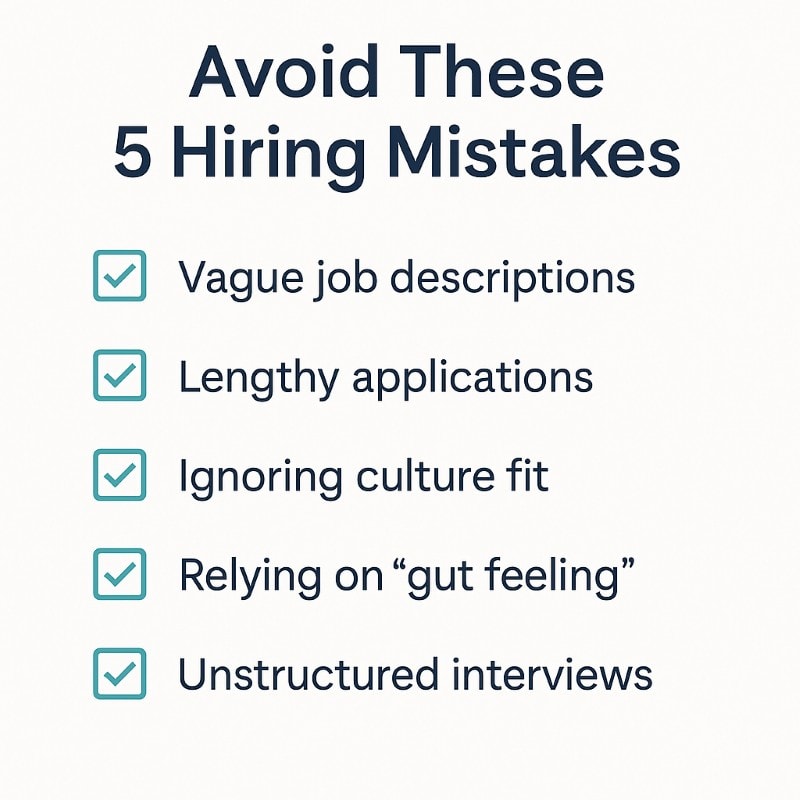
Avoiding these mistakes doesn’t require a major overhaul — just a more thoughtful, structured, and consistent approach.
What Great Companies Do Differently
High-performing companies don’t leave hiring to chance — they treat it as a strategic function, not just an HR task. HR managers play a crucial role in developing effective hiring strategies to ensure the recruitment of suitable candidates who will contribute to long-term business success.
Take Starbucks founder Howard Schultz. He once said that hiring people who share the company’s values was the single most important thing he did to scale the brand. Great companies think the same way — they hire for vision, not just vacancy.
These organizations use hiring as a long-term investment. They’re not just trying to fill an open seat; they’re building teams that drive innovation, culture, and results. They ensure that the people hired are aligned with company values, fostering commitment and trust for long-term success. That means:
- They prioritize clarity — defining what the ideal candidate looks like before recruiting begins.
- They use behavioral assessments — to remove bias and uncover personality fit.
- They involve their teams — because culture is created by people, not policies.
- They onboard with intention — investing time and resources into a strong start.
- They measure outcomes — tracking retention, engagement, and performance over time.
- They focus on hiring the right people for each role — to reduce turnover and improve team dynamics.
Gallup research shows that employees who are a good fit for their role are 3.6 times more likely to be engaged at work. And engaged employees don’t just stay longer — they perform better, collaborate more, and drive revenue growth.
When you build a hiring process like a great company and hire the right candidates, you stop reacting and start leading. Companies that hire the right people consistently see better business outcomes.
Final Thoughts: Hire Smarter, Grow Faster
Hiring isn’t just about filling a role — it’s about shaping your company’s future. Every employee you bring on board either moves your vision forward or holds it back.
When you define the right fit, build a structured process, and use behavioral data to guide your decisions, you’re no longer guessing — you’re leading. You’re building a team designed to succeed, not just survive.
If you’re ready to take the guesswork out of hiring, it’s time to try a smarter approach.
Test OAD for Free
Want to see how science-backed hiring actually works? OAD’s behavioral assessment gives you deep insights into a candidate’s fit before the first interview — so you can make confident, data-driven hiring decisions every time.
Try it for free today and discover how OAD can help you build a stronger, more aligned team.
